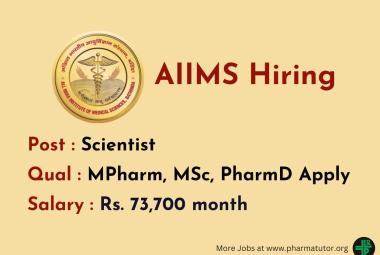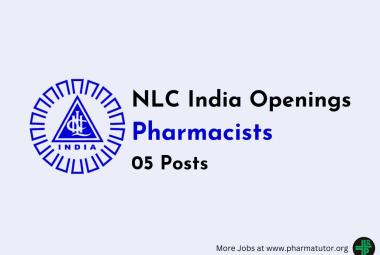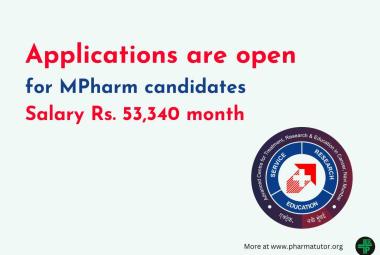Abour Author: RJ Pathyusha B
M.Pharm,
T.K.R.C.O.P, JNTU
Reference ID: PHARMATUTOR-ART-1043
ABSTRACT
The present work describes the local anesthetic activity of milky latex obtained from Calotropis procera and its potentiation with epinephrine and pH. The milky latex at a dilution of 1:10, exhibited significant local anesthetic activity. Both epinephrine (5µg/ml) and pH of 7.2 prolonged the duration of local anesthetic activity. The method used is infiltration anesthesia in Guinea pig. In conclusion, the duration of the effect produced by combination of Calotropis procera latex and epinephrine was longer than that by latex alone.
[adsense:336x280:8701650588]
INTRODUCTION
Calotropis procera (Family:Apocynaceae; Subfamily:Asclepiadaceae; Synonym:Asclepias procera) is a soft wooded, evergreen, perennial shrub1.It is widely distributed throughout the world and is native to Southern Asia, Indochina to Malaysia, Africa, Arabian Peninsula, Australia, Mexico, Pacific Islands, Central and South America and the Caribbean Islands2.
It is known to possess multifarious medicinal properties. Different parts of this plant have been used in Indian Traditional System of medicine for the treatment of leprosy,ulcers,tumors,snake bite,malaria,piles and diseases of spleen, liver and abdomen(3,4). The root is used as a carminative in the treatment of dyspepsia5. Further, the root bark and leaves of Calotropis procera are used by various tribes of central India as a curative agent for jaundice6.Extracts, chopped leaves and latex have shown great promise as nematicides(7,8). The chloroform extract of root has been shown to exhibit hepatoprotective activity9. The aqueous extract of the latex has been shown to inhibit cellular infiltration and afford protection against development of neoplastic changes in the transgenic mouse model of hepatocellular carcinoma10.Methanol and aqueous extract of leaves were reported to possess antioxidant and anti bacterial activities11. The whole plant is recommended as a host plant for Danaus chrysippus (12,13). The leaves were reported to contain alkaloid mudarine, glycosides calotropin,uscharin and calotoxin, besides yellow bitter acid and resin. The milky latex contains a powerful bacteriolytic enzyme, a very toxic glycoside calactin, calotropin DI, calotropin DII, calotropin FI, calotropin FII and a non toxic powerful proteolytic enzyme calotopin. The whole plant contains α- amyrin, β-amyrin, teraxasterol, β- sitosterol and a wax (14,15).
Literature survey revealed that the latex of Calotropis procera exhibited local anesthetic activity in frog (nerve block anesthesia) and no researcher has yet reported infiltration method in guinea pig, effect of vasoconstrictor and pH. Therefore, it is worth conducting an investigation on local anesthetic activity of Calotropis procera latex by infiltration method and to study the effect of vasoconstrictor and pH on local anesthetic activity16.
Local anesthetics are the agents which prevent or relieve pain by interrupting nerve conduction17. They effectively block and relieve pain,but with a relatively short duration of action, limiting their analgesic effectiveness. Therefore, a long acting local anesthetic would improve the management of pain, but no such agent is yet available for clinical use18. As early as 1903, Braun discovered that the addition of epinephrine to solutions of local anesthetics increased and prolonged their action. Vasoconstrictors reduce the rate of absorption of a drug by allowing the metabolic rate of the local anesthetic to keep pace with the rate at which it is absorbed into blood stream. This also reduces systemic toxicity. However, prolonged use of a vasoconstrictor on major arteries may cause irreversible tissue damage and can lead to gangrene19. Therefore, the present work was undertaken to evaluate the potentiation of the local anesthetic activity of milky latex, obtained from Calotropis procera, with epinephrine and pH in Guinea pig.
2. MATERIALS AND METHODS:
2.1 Chemicals and equipments: Milky latex of Calotropis procera, centrifuge(REMI), Distilled water, Xylocaine (0.25w/v), Epinephrine (Vasocon 1mg/ml), Sodium hydroxide solution (0.2M), Normal saline solution (0.65%Nacl), Hair depleting agent and sharp pins.
2.2 Animals: Guinea pig (Male).
2.3 Method: Infiltration anaesthesia method.
2.4 Collection of milky latex:
The milky latex was collected usually between 8 am and 10 am by cutting the tips of young branches of C.procera. Then 1 ml of latex was centrifuged at 5,000 r.p.m after being diluted 10 times its volume with distilled water. The gummy pellet was discarded and the supernatant liquid was used for evaluation of local anesthetic activity.
2.5 Dilution of Epinephrine:
Vasocon injection (Epinephrine 1mg /1ml) was purchased from the local market and diluted with distilled water to get a solution containing 10µg/1ml. 0.5 ml of diluted solution was used in the present study.
2.6 Preparation of 0.2M Sodium hydroxide solution 20:
0.2 M of sodium hydroxide solution was prepared by dissolving 8.0 gm of sodium hydroxide in 1000 ml of distilled water. 34.7 ml of 0.2M sodium hydroxide solution was used in the present study.
2.7 Preparation of standard solution and test solution:
Xylocaine solution (0.25w/v) was purchased from the local market. 0.5 ml of this solution was mixed with 0.5 ml of diluted epinephrine solution (Standard solution-I). Similarly, 0.5 ml of latex (1:10) was mixed with 0.5 ml of diluted epinephrine solution (Test solution-I). Xylocaine solution was mixed with 34.7 ml of 0.2M sodium hydroxide solution (Standard-II) and 50 ml of latex (1:10) was mixed with 34.7 ml of 0.2M sodium hydroxide solution(Test-II).
2.8 Infiltration Anesthesia method:
Six healthy adult Guinea pigs (CPSCEA regd no 1016-a-06-CPSCEA-0112009) were taken and fur on their back was removed by using depleting agents. The depleted area was washed with normal saline and allowed to dry. Then 1 ml each of xylocaine solution, latex(1:10) Standard-I, II and Test-I, II were injected intradermally to six different guinea pigs separately. Squeak or twitch response of animal upon touching the injection site with sharp pin was marked as (+) and (-) if the animal does not show any response to pin prick21.
3. RESULTS AND DISCUSSION:
In the Infiltration method, before administration of the standard and test there was a sharp reponse for pin prick.After administration of the standard (Xylocaine alone) there was response for pin prick up to 1 minute. Then the response reproduced at 45th minute. Test(latex1:10 alone) , Standard –I(Xylocaine+Epinephrine) , Test-I (Latex1:10 + Epinephrine), Standard-II (Xylocaine + 0.2M Sodium hydroxide), Test-II(Latex1:10+0.2M Sodium hydroxide) reproduced response at 20th minute,65th minute,35th minute,60th minute and 30th minute respectively. The results are shown in Table No:1.
The duration of infiltration anesthesia can be prolonged by the addition of epinephrine (5µg/ml) to the injection solution. Epinephrine also decreases peak concentrations of local anesthetics in blood.
Local anesthetics tend to be only slightly soluble as unprotonated amines. Therefore, they are generally marketed as water soluble salts, usually hydrochlorides. Many local anesthetics are weaker bases with typical pKa values ranging from 8 to 9, but their hydrochloride salts are mildly acidic. This property increases the stability of the local anesthetic esters and any accompanying vasoconstrictor substance.
Although the unprotonated species of the local anesthetics is necessary for diffusion across cellular membranes, it is the cationic species that interacts preferentially with sodium channels. This conclusion has been supported by the results of experiments on anesthetized mammalian non myelinated fibers. In these experiments, conduction could be blocked or unblocked merely by adjusting the pH of the bathing medium to 7.2 or 9.6, respectively, without altering the amount of anesthetic present.
Table No: 1 Infiltration Anesthesia Method:
|
Group |
Time in minutes |
Squeak Response |
|
Before administration of the drug Standard (Xylocaine alone)
Test (Latex 1:10 alone)
Standard-I (Xylocaine+ Epinephrine)
Test-I (Latex1:10+Epinephrine)
Standard-II (Xylocaine+0.2M Sodium hydroxide)
Test-II (Latex1:10+0.2M sodium hydroxide) |
0
1 5 10 15 20 25 30 35 40 45
1 5 10 15 20
1 5 10 15 20 25 30 35 40 45 50 55 60 65
1 5 10 15 20 25 30 35
1 5 10 15 20 25 30 35 40 45 50 55 60
1 5 10 15 20 25 30
|
+
+ - - - - - - - - - +
+ - - - -+
+ - - - - - - - - - - - - -+
+ - - - - - - -+
+ - - - - - - - - - - - +
+ - - - - - -+
|
CONCLUSION
The duration of the effect produced by combination of Calotropis procera latex and epinephrine was longer than that by latex alone. From the above observation, we conclude that,epinephrine and pH 7.2 potentiate the local anesthetic effect of Calotropis procera latex in Guinea pigs when co-injected intradermally. The present results may probably support the development of a long acting local anesthetic.
REFERENCES
1. Sharma.B.M.,Root systems of some desert plants in Churu,Rajasthan. Indian forester, 1968, 94(3): 240-246.
2. Rahman.M.A and Wilcock.C.C., A Taxonomic revision of Calotropis (Asclepiadaceae). Nordic Journal of Botany, 1991, 11(3):301-308.
3. Kirtikar.K.R. and Basu.B.D., Indian medicinal plants, Lolit Mohan Basu, Allahabad, India: 1935, 1606.
4. Parrotta.J.A., Healing plants of peninsular India, CAB International, Wallingford, UK and Newyork: 2001, 944.
5. Kumar.V.L. and Arya.S.,Medicinal uses and pharmacological properties of Calotropis procera. In:J.N.Goyil, Editor, Recent progress in medicinal plants 11, Studium press, Houston, Texas, USA: 2006, 373-388.
6. Samratsar.S and Diwanji.V.B.,Plant sources for the treatment of jaundice in the tribals of western madhyapradesh of India.J.Ethnopharmacol,2000,73: 313-316.
7. Anver.S and Alam.M.M.,Effect of latex seed dressing on interacting root-knot and reinform nematodes. Afro-Asian Journal of Nematology, 1992, 2: 17-20.
8. Charu-Jain and Trivedi.P.C., Nematicidal activity of certain plants against root-knot nematode. Annals of plant protection sciences.1997, 5(2): 171-174.
9. Basu.A.,Sen.T.,Ray.R.N , et al. Hepato protective effects of Calotropis procera root extract on experimental liver damage in animals. Fitoterapia, 1992, 63: 507-514.
10. Choedon.T., Mathan.G., Arya.S., Kumar.V.L, et al. Anticancer and cytotoxic properties of the latex of Calotropis procera in a transgenic mouse model of hepatocellular carcinoma.World.J.Gastroenterol, 2006, 12: 2517-2522.
11. Yesmin.M.N.,Uddin.S.N.,Mubassara.S, et al. Antioxidant and antibacterial activities of Calotropis procera Linn.Am-Euras. J.Agri and Environ.Sci, 2008, 4(5):550-553.
12. Bramwell.D and Bramwell.Z.I., Historia natural de las Islas canarias.1987, Madrid: 2945.
13. Mikula.R.,Butterfly plants for your garden. www.butterflybreeders.com/Pages/bflygdning/butterflyplants.html.5.
14. Herbal monograph,Himalaya herbal healthcare,India.
15. Grieve.M.,A modern herbal.www.botanical.com.
16. Ramanathan.T., Evaluation of local anesthetic activity from Calotropis procera in Euphylyctus hexadactylus. Plant Archives,2008,8(2): 995-997.
17. William Catterall and Kenneth Mackie., Goodman and Gilman’s The Pharmacological basis of therapeutics, Local anesthetics. 10th edition, 2005, 367.
18. Bernards.C.M and Kopacz.D.J., Effect of epinephrine on lidocaine clearance in vivo: a microdialysis study in humans. Anesthesiology, 1999, 91:962-968.
19. Hille.B. Theories of Anesthesia, General perturbations versus specific receptors. Mechanisms of Anesthesia, Vol.2, Progress in Anesthesiology, Raven press: Newyork,1980, 551-565.
20. Indian Pharmacopoeia,Ministry of Health and Family Welfare, Government of India, Controller of Publications, Delhi, Vol-II,1996, A-144.
21. Kulkarni.S.K., Handbook of Experimental Pharmacology, Local anesthetics, 3rd edition, 1999, 152.
FIND OUT MORE ARTICLES AT OUR DATABASE









